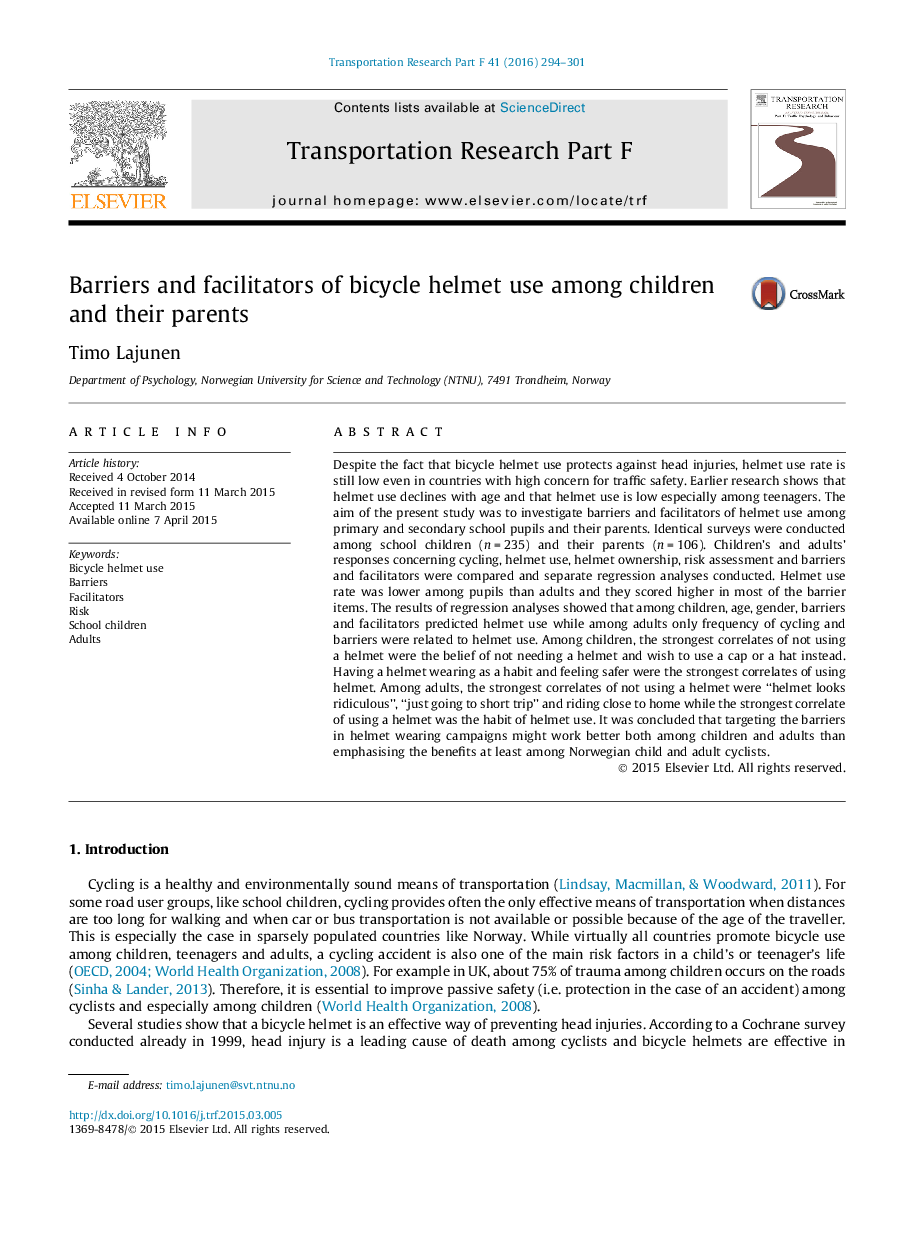| کد مقاله | کد نشریه | سال انتشار | مقاله انگلیسی | نسخه تمام متن |
|---|---|---|---|---|
| 5037410 | 1370220 | 2016 | 8 صفحه PDF | دانلود رایگان |
- A survey was conducted among primary and secondary school children and their parents.
- Children used helmet less frequently than adults and scored higher in barrier items.
- Among children, both barriers and facilitators were related to helmet use.
- Among adults, only the cycling frequency and barriers predicted helmet use.
- Targeting the barriers might produce better results than emphasizing the benefits.
Despite the fact that bicycle helmet use protects against head injuries, helmet use rate is still low even in countries with high concern for traffic safety. Earlier research shows that helmet use declines with age and that helmet use is low especially among teenagers. The aim of the present study was to investigate barriers and facilitators of helmet use among primary and secondary school pupils and their parents. Identical surveys were conducted among school children (n = 235) and their parents (n = 106). Children's and adults' responses concerning cycling, helmet use, helmet ownership, risk assessment and barriers and facilitators were compared and separate regression analyses conducted. Helmet use rate was lower among pupils than adults and they scored higher in most of the barrier items. The results of regression analyses showed that among children, age, gender, barriers and facilitators predicted helmet use while among adults only frequency of cycling and barriers were related to helmet use. Among children, the strongest correlates of not using a helmet were the belief of not needing a helmet and wish to use a cap or a hat instead. Having a helmet wearing as a habit and feeling safer were the strongest correlates of using helmet. Among adults, the strongest correlates of not using a helmet were “helmet looks ridiculous”, “just going to short trip” and riding close to home while the strongest correlate of using a helmet was the habit of helmet use. It was concluded that targeting the barriers in helmet wearing campaigns might work better both among children and adults than emphasising the benefits at least among Norwegian child and adult cyclists.
Journal: Transportation Research Part F: Traffic Psychology and Behaviour - Volume 41, Part B, August 2016, Pages 294-301
